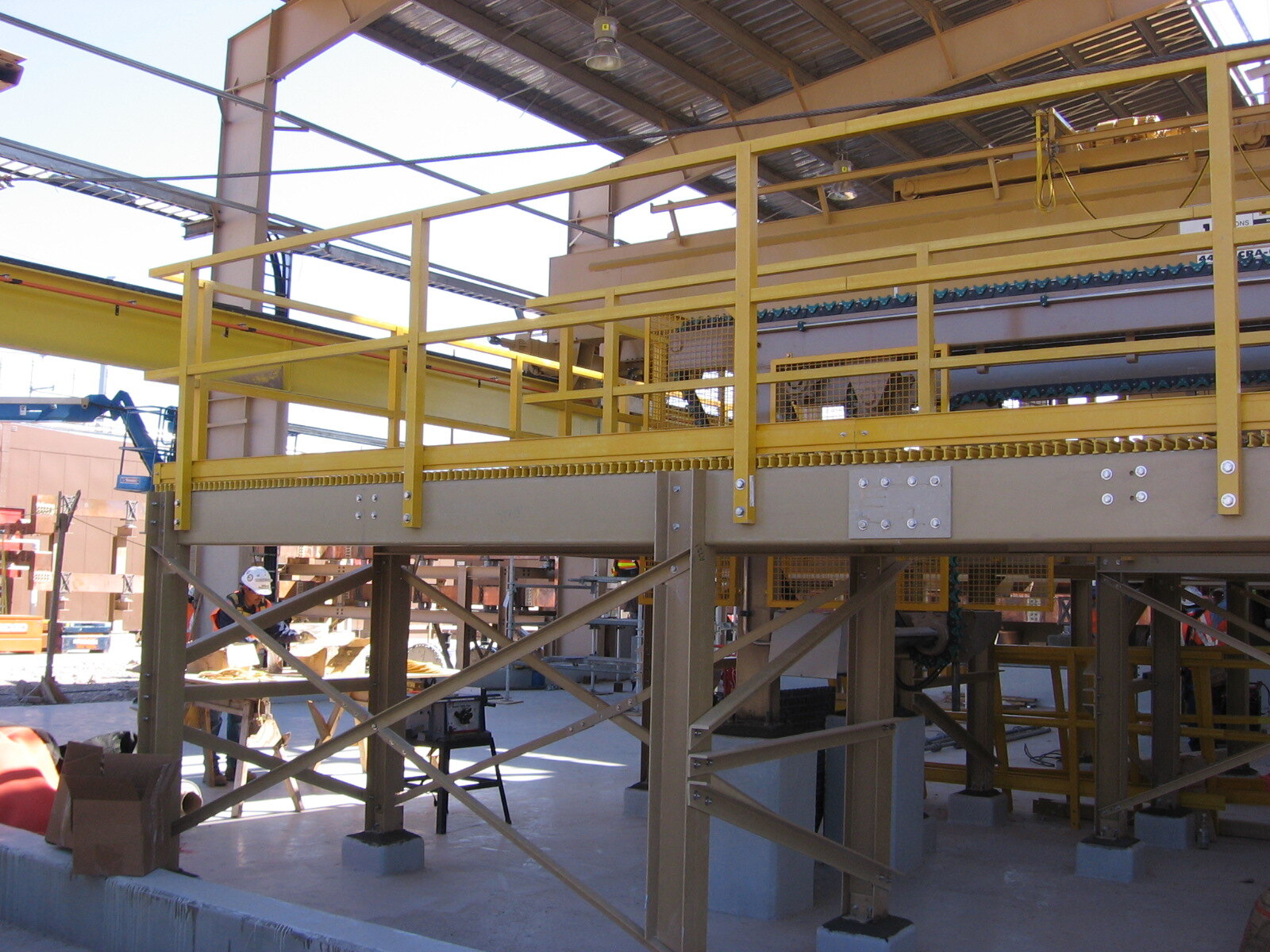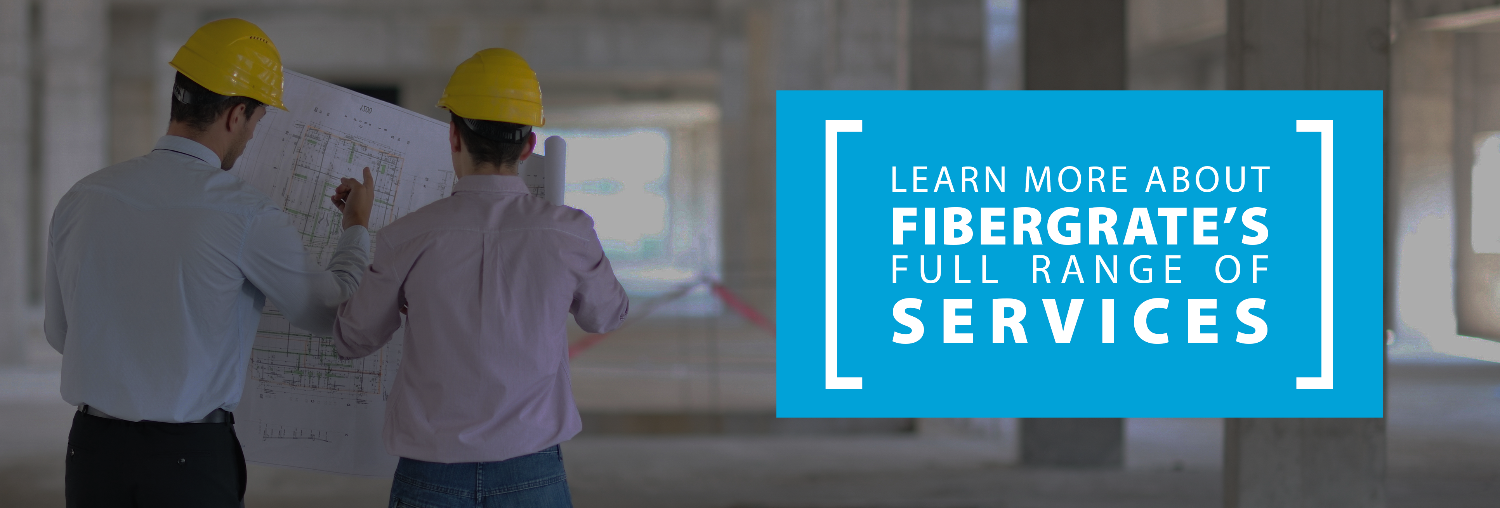Unlike mobile platforms like scaffolding or aerial lifts, stationary work platforms are fixed in...
Safety and Productivity Benefits of FRP for Stationary Work Platforms
Unlike mobile platforms like scaffolding or aerial lifts, stationary work platforms are fixed in place and typically used for tasks performed repeatedly in the same location. While traditional materials like steel and aluminum have historically been used for this type of application, the emergence of fiberglass reinforced plastic (FRP) is transforming the landscape of elevated work platforms. In this blog, we will explore the properties of FRP, its safety and efficiency benefits, real-world applications, and considerations for stationary work platforms.
Potential Safety Issues with Traditional Stationary Work Platforms
Stationary work platforms using traditional materials like aluminum or steel could present certain safety issues depending on factors including material efficiency, design, maintenance, usage, and compliance with safety regulations. Some common safety concerns include:
- Fall Hazards: Falls from elevated surfaces are a significant risk. Workers can fall from platforms unless protection, such as guardrails, is in place. Proper training on fall protection equipment and procedures is also essential.
- Collapse or Structural Failure: If the platform is not designed, constructed, or maintained properly, there is a risk of collapse or structural failure, leading to injuries or fatalities. Regular inspections and maintenance are crucial to ensure structural integrity.
- Overloading: Exceeding the weight capacity of the platform can lead to structural damage or collapse. Adhering to weight limits and distributing loads evenly helps prevent overloading.
- Tripping Hazards: Uneven surfaces, clutter, or debris on the platform can create tripping hazards. Keeping the platform clean and clear of obstacles is important to prevent accidents.
- Electrical Hazards: In environments where electrical equipment is used, there is a risk of electric shock if the platform comes into contact with live wires or electrical systems. Proper insulation, grounding, and training are necessary to mitigate this risk.
- Impact of Adverse Weather Conditions: Outdoor platforms are exposed to weather elements such as rain, wind, and ice which can affect stability and traction. Adequate precautions, such as anti-slip surfaces and weatherproofing, should be taken to address these concerns.
See how Fibergrate work platforms, stairs, and ladders can be used to create a safer work environment in this case study.
- Inadequate Training and Supervision: Inadequate training on platform usage and safety procedures can increase the risk of accidents. Workers should receive comprehensive training on operating the platform safely, and emergency procedures in case of incidents.
- Proximity Hazards: Stationary platforms near moving machinery or equipment pose a risk of entanglement or collision. Proper guarding, signage, and safety protocols should be in place to prevent accidents in these scenarios.
- Impact of Reduced Visibility: Poor visibility, especially in low-light conditions or areas with obstructed views, can increase the risk of accidents on stationary platforms. Adequate lighting and signage can help improve visibility and prevent mishaps.
Addressing these safety issues requires a combination of proper design, regular maintenance, comprehensive training, and adherence to safety regulations and standards. Regular risk assessments and proactive measures are essential to ensure the safety of workers using stationary work platforms.
What Makes FRP Ideal for Safer Work Platforms?
FRP, or fiberglass reinforced plastic, is a composite material made by combining a plastic matrix with reinforcing glass fibers. Structural FRP products, such as gratings, railings, and ladders, utilize long, continuous strands of fiberglass to strengthen the product. This unique combination gives FRP several outstanding properties:
- Strength: FRP is lightweight and strong, exceeding the strength-to-weight ratio of steel.
- Corrosion Resistance: Unlike metals, FRP does not rust or corrode, making it ideal for harsh environments.
- Electrical Insulation: The non-conductive nature of FRP eliminates the risk of electrical shock, a significant concern in many industrial settings. This makes FRP platforms inherently safer for workers in environments with electrical hazards.
- Lightweight: FRP is much lighter than traditional materials like steel, making it easier to transport, assemble, and install work platforms. This can reduce installation time and costs, as well as minimize strain on workers. This can reduce installation time by up to 50% and lower labor costs significantly.
- Slip Resistance: FRP grit surfaces are textured to provide excellent slip resistance, even in wet or oily conditions. This helps to prevent slips and falls, a leading cause of workplace injuries.
- Impact Resistance: FRP is highly resistant to impacts and damage, reducing the risk of structural failure due to accidental collisions or dropped objects. This contributes to the overall safety and longevity of the work platform.
- Versatility: FRP can be used for the standing surface of stationary work platforms as well as the ladders, stairs, guardrails, and handrails needed to create a complete system.
By combining these properties, FRP offers a superior material choice for stationary work platforms, prioritizing safety, durability, and efficiency in elevated work environments.

FRP stationary work platform
These characteristics make FRP an ideal material for a wide range of applications, including the construction of safe, durable, and efficient stationary work platforms.
FRP Boosts Efficiency and Productivity
Beyond safety, FRP work platforms offer significant efficiency benefits:
- Easy Installation: Their lighter weight makes FRP platforms faster and easier to assemble, reducing installation time and costs.
- Customization: FRP can be easily molded into various shapes and sizes, allowing for custom designs to fit specific work environments.
- Low Maintenance: FRP platforms require minimal maintenance due to their corrosion resistance and durability, saving time and money over the long run.
Real-World Applications of FRP Industrial Work Platforms
FRP industrial work platforms are proving their worth in real-world applications, making workplaces safer and more efficient. Here are a couple of examples of how FRP is revolutionizing elevated work across industries:
Platforms and Safety Ladders at Chemical Plant
A chemical plant replaced corroding steel platforms with Fibergrate’s Dynaform FRP structural shapes and molded grating, improving safety and reducing maintenance in a corrosive environment.
Chemical Tank Platform and Guardrails
A Los Angeles sewage treatment plant decided to use Fibergrate’s fiberglass reinforced glass (FRP) to increase worker safety, cut costs on the installation, and have a longer service life. Corvex Molded Grating and Dynaform Guardrail replaced the steel gratings and railing around their chemical tanks.Considerations and the Future
While FRP industrial work platforms clearly offer numerous advantages, the initial investment can be higher than traditional materials. The long-term savings in maintenance and safety often offset these costs by quite a large margin. Proper installation and adherence to safety regulations are essential for maximizing the benefits of FRP.
Stationary work platforms are indispensable tools for various industries, and the emergence of FRP as a construction material is revolutionizing their safety, durability, and efficiency. FRP's unique combination of properties makes it an ideal choice for mitigating common safety hazards associated with elevated work. As industries continue to prioritize worker safety and operational efficiency, the adoption of FRP stationary work platforms is expected to grow, solidifying its position as the material of choice.
Explore Fibergrate’s work platforms and keep your team safe and productive.
Topics: Safety, Employee Safety, Work Platforms


